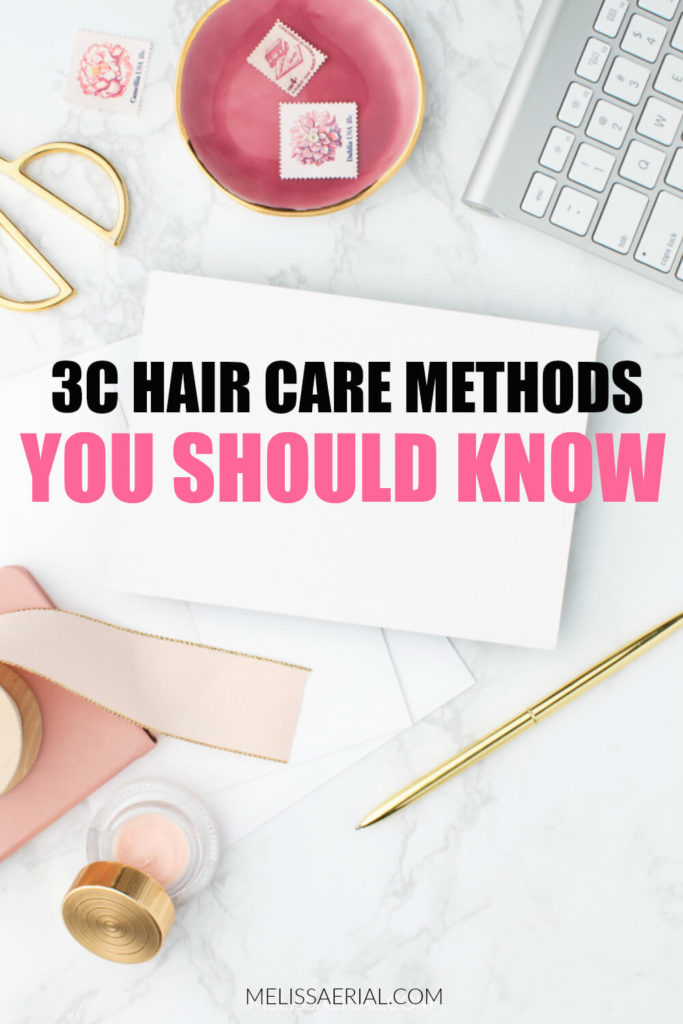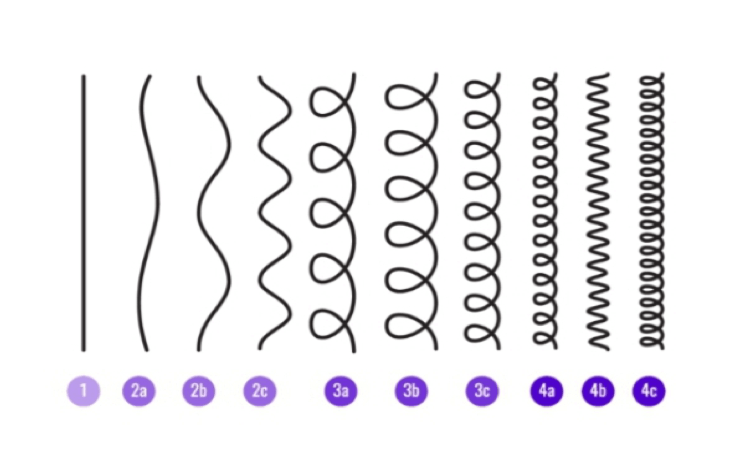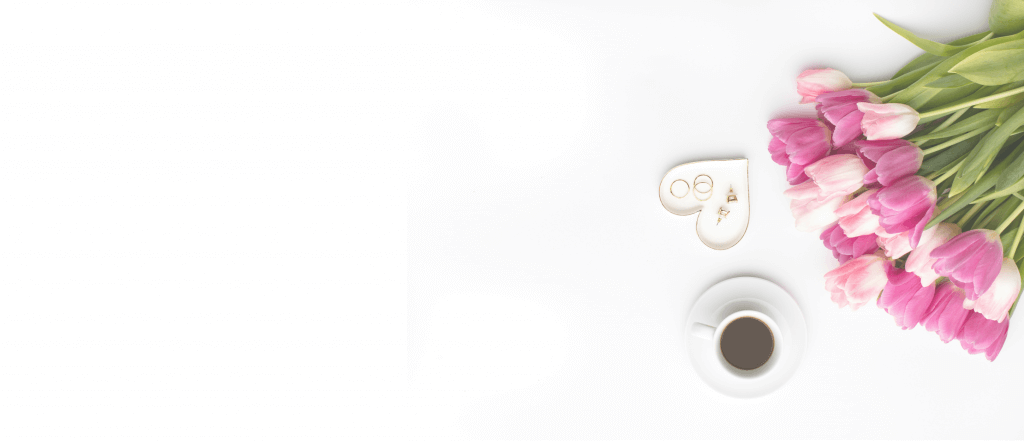3C hair type is a curly type of hair with the tightest pattern among all type 3 hair from the above discussion.
Its coils are dense and are closely packed together to achieve the texture.
The disulfide bonds present between hair proteins in the hair shaft determines the extend of waves or curls in the hair.
The more the links, the curlier the hair, and the less the connections, the straighter the hair.
This curly hair, whose strands have a more definite S pattern, which can be either uppercase, lowercase, or may at times resemble a Z pattern.
The coils in this hair type are tighter, and its strands are densely packed together; hence, making it amply voluminous.
Let us take a deep dive to learn more about 3C hair type.
How you can distinguish it from type 4 hair, and finally, get to know its maintenance tips.

THE MAJOR DIFFERENCES BETWEEN 3C & 4 TYPE HAIRS
Now, how can you distinguish between type 3C and type 4 hairs?
1). Type 4 hair is curlier than type 3C hair. Each of its strands has a zigzag pattern. We, therefore, often use the term kinky or coily hair to refer to type 4 hair.
2). Type 4 hair is often dry, thin or soft and has tight layers. For this reason, it is more prone to breakage.
3). Because of much breakage, type 4 hair doesn’t grow too long compared to 3C hair unless you give it proper care.
4). Type 4 hair is dryer than type 3C hair because of the uneven distribution of oil throughout the hair due to the ringlets’ obstructions.
HOW TO KNOW IF YOUR HAIR IS 3C HAIR?
The easiest way to identify your type of hair is to examine its texture.
Curls of kind 3C hair resemble tight corkscrews, and the circumference of the spirals is approximately equal to that of a pencil.
This hair type is capable of holding onto its curly pattern after stretching it out.
The curls are also intact for up to four days after cleaning it.
3C hair is slightly course but has a high density because of its volume.

CARING FOR 3C HAIR TYPE
Understanding your hair type is the basics of giving it proper care.
3C hair type is more prone to frizz and changes in weather.
It often experiences dryness, dullness, and damage due to the unequal distribution of sebum along the strands.
These concerns lead us to the question, how can you cope up with this hair type?
You can employ the following practices:
CLEANING ROUTINE
- Wash and condition your 3C hair thoroughly to remove oils and grease without stripping the curls
- Apply a styling curl cream to moisturize the ringlets while retaining their shape and bounce
- Define the curls with defining
After washing your hair, do the following to maintain it until your next wash:
- Apply a curl refresher to revive the curls without water. A Leave-In conditioner can also work to keep a constant moisture level on the rings
- Perform scalp massage to enhance its natural volume
- Deep condition your hair a least once a week to keep the curls elastic and moisturized
- Adopt a moisturizing routine to combat dryness and split ends. The LOC Method can be of great help!
STYLING ROUTINE
- Use Appropriate tools when handling 3C hair. For instance, use a hair roller like a perm rod to straighten your hair to achieve softer and bouncier curls
- Avoid subjecting 3C hair to heat to prevent its breakage. If it is inevitable to use heat styling equipment, prepare your hair with heat protectant serum or spray
SLEEPING ROUTINE
While sleeping, we tend to make regular head movements; hence, creating friction between the hair strands and the headrests.
This force often causes lots of tangling, and your hair will end up shedding and breaking.
Adopt the following sleeping routines to keep your hair intact.
- Do not sleep with loose hair because it will lose its structure. Instead, gather all the strands and tie them to a ponytail. After that, you can wrap it with a silk scarf or a satin bonnet.
Rest your head on a satin pillowcase.
A cotton pillowcase creates more friction, and your hair will dry out and break eventually.
Remember, protecting your hair while resting your head is the key to retaining its growth.
PRODUCTS TO USE
- Work with moisturizing shampoos and conditioners
- Embrace natural shampoos, or rather sulfate-free shampoos, to protect natural oils in your strands
- Use natural oils like coconut, jojoba, and sweet almond oil because they penetrate adequately through the hair cuticle while protecting each strand
- Use lightweight styling creams to moisturize the curls and define their pattern
- For highly porous 3C hair, use protein treatments to fill the gaps in the cuticles
- Get rid of products with a heavier consistency, which will weigh down the strands
WHAT IS THE BEST WAY TO GROW 3C HAIR TYPE LONG?
Always keep your 3C hair type hydrated for growth to occur.
All type of 3C hair needs extra moisture and immediate care because of its fragile nature.
Besides, avoid subjecting it to stress so that the hair breakage rate is not as fast as growth.
This hair type is capable of holding onto its curly pattern after stretching it out.
The curls are also intact for up to four days after cleaning it.
3C hair is slightly course but has a high density because of its volume.
USE SULFATE-FREE SHAMPOOS
Shampoos with sulfates tend to strip natural proteins away from the hair; hence, exposing the curls to dryness.
Dry hair tends to break easily. You may, therefore, fail to notice growth taking place.
For this reason, get rid of these products for change to occur.
If you have to use a sulfate shampoo, then dilute it with water to reduce its potency.
APPLY PROTECTIVE HAIRSTYLES
A low-manipulative style is one that does not demand heat, everyday styling, nor putting your hands on it often.
These styles include twists, braids, or crochet styling.
A hairstyle that protects your ends is way better than that, which pulls your edges or tangles your strands.
Thus, after washing your curls, put them on these protective styles and leave it for two-three weeks to notice a change.
Of importance to note, do not keep your 3C hair in these styles too long to avoid split ends or breakage.
MOISTURIZE HAIR REGULARLY
Since 3C hair type is subtle, delicate, and prone to dryness, the best way to combat these problems is to keep it hydrated.
Consistent moisturizing of your hair helps to grow strands long and healthy while healing split ends.
Note: Affiliate links may be used in this blog post. I may receive a small commission at no extra cost to you if you make a purchase through my affiliate link. Read my full disclosure policy.

